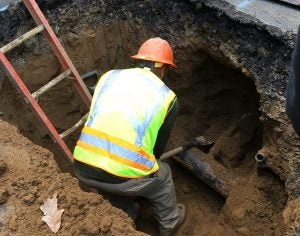Tom Neltner, J.D., is Chemicals Policy Director
Transparency is an essential aspect of any successful program to reduce lead in drinking water. Knowing if you have a lead service line (LSL)—the pipe that connects the main under the street to the building—can help you decide whether to use a filter or replace the line. If you are looking for a home to rent or buy, the presence of a LSL can be a factor in your choice. Transparency can also help reassure consumers that their utility is aware of the problem and committed to protecting their health. The challenge for many water suppliers is that they often don’t have perfect information about the presence of LSLs. But incomplete information is not a reason for failing to disclose what is known, what is uncertain, and what is unknown.
In a February 29, 2016 letter to the states, U.S. Environmental Protection Agency (US EPA) asked states to increase transparency by posting on either the state’s website or have it posted on local utilities’ websites:
“the materials inventory that systems were required to complete under the [Lead and Copper Rule] including the locations of lead service lines [LSLs], together with any more updated inventory or map of lead service lines and lead plumbing in the system.”
In response to this letter and systemic issues brought to light about lead in drinking water in the village of Sebring, Ohio and Flint, Michigan, the State of Ohio enacted pragmatic legislation crafted by Governor John Kasich’s administration and the Ohio Environmental Protection Agency (Ohio EPA). Among its supporters was the Ohio Environmental Council. One provision in the law requires community water systems to
“identify and map areas of their system that are known or are likely to contain lead service lines and identify characteristics of buildings served by the system that may contain lead piping, solder, or fixtures . . .”
Utilities must submit the information to Ohio EPA as well as the departments of Health and of Job and Family Services by March 9, 2017 and update this information every five years.
Read More »










